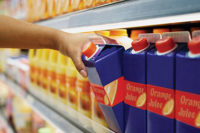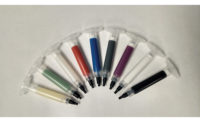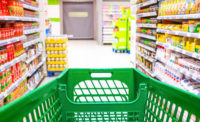We begin each issue with certain objectives. This month, our objectives were to feature raw materials, rheological developments and packaging applications, in addition to our regularly scheduled departments.
Why am I surprised that packaging seems to dominate the issue?
Our cover story (pg. 30) demonstrates the effects of proper storage conditions for raw materials used in laminating adhesives. Another story talks about cationic UV adhesives that can be specially formulated to laminate opaque substrates that cannot be laminated using other UV chemistries (pg. 34). By the way, a report in Industry News predicts that the U.S. demand for radiation-cured products will increase to $1.3 billion/year by 2003 and that the packaging, printing and publishing markets will continue to account for the majority of the demand for radiation-cured products (pg. 10).
One of the articles in this issue on rheology discusses the benefits of foaming to produce greater control of the adhesive rheology and density in the paper-laminating industry (pg. 45). Another more traditional approach to rheology control is with fumed silica (pg. 48).
According to a recent report by The Freedonia Group*, packaging will remain the largest market for adhesives in the United States. Although adhesives are used in nearly all sectors of the economy, final demand will remain heavily linked to the packaging and construction industries, with most of the remaining demand arising in manufacturing and assembly operations.
The report further states that the packaging industry was the largest market for adhesives in the United States in 1998, consuming 5.3 billion pounds of adhesives. Demand for adhesives in packaging markets in the United States is forecast to increase 2.8 percent per year to six billion pounds in 2003, slightly outpacing real (inflation-adjusted) gains in packaging shipments.
The packaging industry generally tracks the overall U.S. economy, albeit with a greater degree of year-to-year stability and less inherent cyclicality, according to the report. From an adhesives standpoint, the most important application in the packaging market is paperboard, particularly corrugated paperboard boxes, and steady growth in this bedrock market will be the primary factor behind sector-wide gains. Starch-based and sodium silicate adhesives dominate the paperboard packaging sector due to their low cost, adequate bonding and amenability to high-speed production processes. However, substantial demand also arises for formulated synthetic adhesives such as ethylene vinyl acetate (EVA) and polyvinyl acetate (PVA).
In addition to paperboard packaging, the major applications for adhesives in the packaging industry are pressure sensitive tapes and labels, paper bags and sacks, envelopes, and film and foil packaging.


